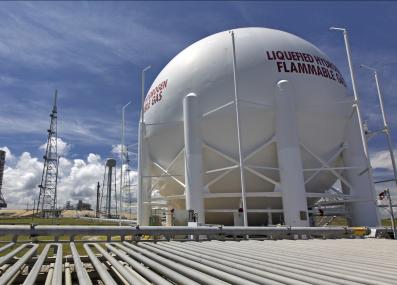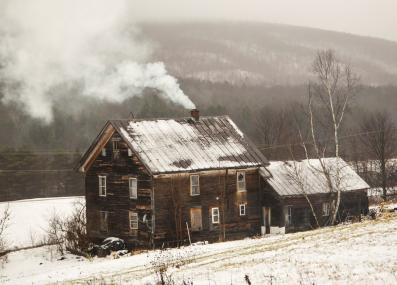Have a question?
Why does burning coal generate more CO2 than oil or gas?
Coal contains more carbon than oil or gas. When we burn these fuels, the higher amount of carbon in coal reacts to form CO2, while a higher proportion of hydrogen in oil and gas causes them to form H2O along with CO2.
December 16, 2022
All living things are made mostly of carbon-based molecules—so fossil fuels, which are made of once-living things, are as well. But coal “has a lot more carbon in it” than oil or gas, says Gregory Stephanopoulos, an MIT professor of chemical engineering. The “carbon-intensity” of each fuel determines how much CO2, or carbon dioxide, each produces.
Coal, oil, and gas were created over millennia as buried organic material decayed.
Today’s coal began as plants growing in and near swamps millions of years ago, which died and became covered with water. Cut off from oxygen, the plants slowly decomposed, and bacteria and chemicals in the water reacted to create a substance called peat.
As geology changed, water and sediment covered the peat, burying it under layers of earth and minerals, and applying pressure.
“When organic matter is buried in sediments, it gets cooked at higher temperatures,” says Shuhei Ono, an MIT professor of geochemistry. This heat aided chemical reactions and broke down molecules, pushing out hydrogen and oxygen and leaving behind higher percentages of carbon. Thus, peat became coal.1
Generally, the more pressure and heat coal experiences as it forms, the more carbon it contains—from younger “lignite” coal (about 25 percent carbon) to “anthracite” coal (up to 97 percent carbon).
Oil and gas formed not in swamps, but in the ocean, when small plants and animals called plankton died and sank to the ocean floor, mixing with other organic material. Like the peat in swamps, this material was buried and exposed to pressure and heat under the ocean floor, producing a material called kerogen. With increased temperature and pressure, the kerogen slowly lost its hydrogen atoms, shedding them first as long chains of carbon and hydrogen (oil), and finally as CH4 (methane, or gas). Pure carbon is left underground, while the hydrogen-rich oil and gas can be extracted and burned as fuels.
In the end, says Ono, “methane contains only C-H bonds, and coals are [mostly] C-C. Oil is between the two.”
When humans burn any of these fossil fuels, the chemical reaction releases energy in the form of heat. “This is the energy we use for power generation or moving cars, and doing all the things that we do with fossil fuels,” says Stephanopoulos. As the fuels burn, oxygen in the air reacts either with carbon, forming CO2, or with hydrogen, forming H2O, or water vapor. When coal burns, its higher proportion of carbon molecules creates more CO2 per unit of energy. For oil and gas, it’s “mainly the hydrogens that will burn and generate energy, not the carbons,” Stephanopoulos says.
Though burning coal is more carbon-intensive, both oil and gas still produce climate-warming CO2. And natural gas is largely made up of CH4, a short-lived climate pollutant that warms the planet even more than CO2.
Thank you to Juan Manuel Alfonso of Argentina for the question. You can submit your own question to Ask MIT Climate here.
1 Coal formation also creates some natural gas, which is trapped in fractures in coal buried underground.










